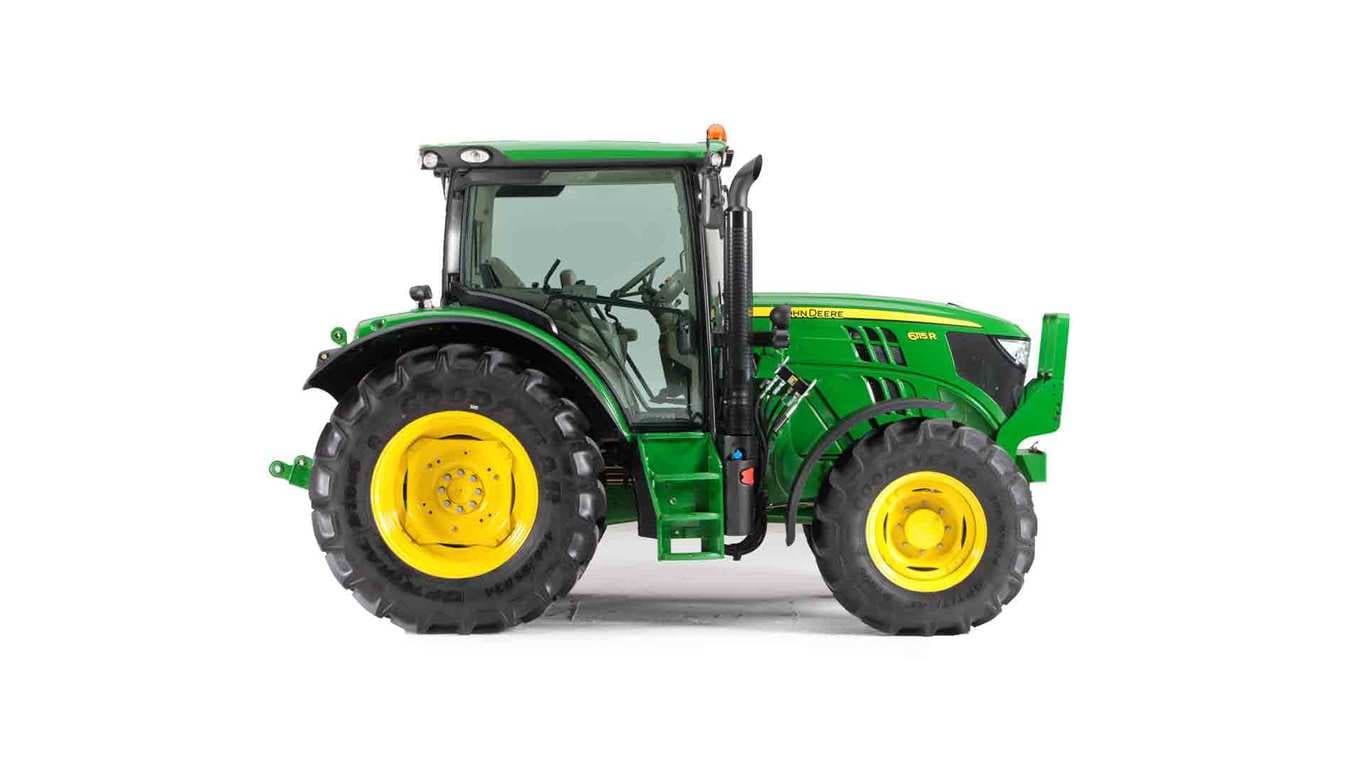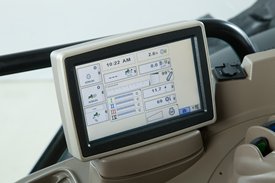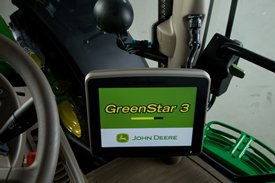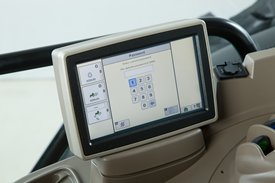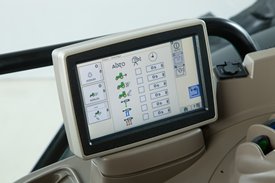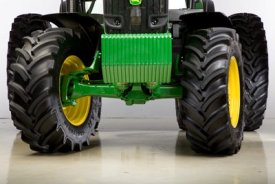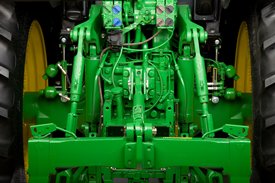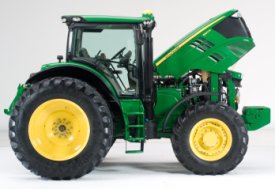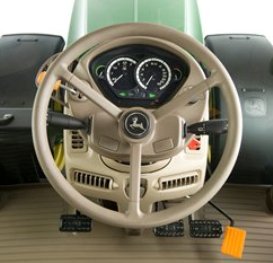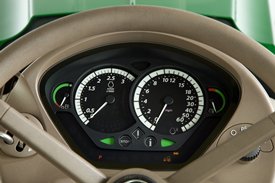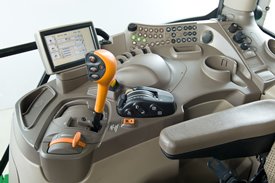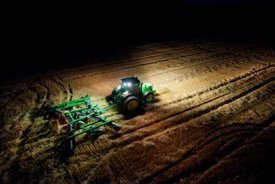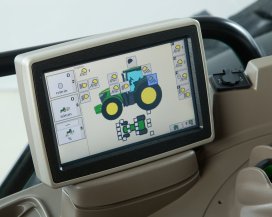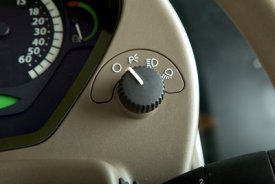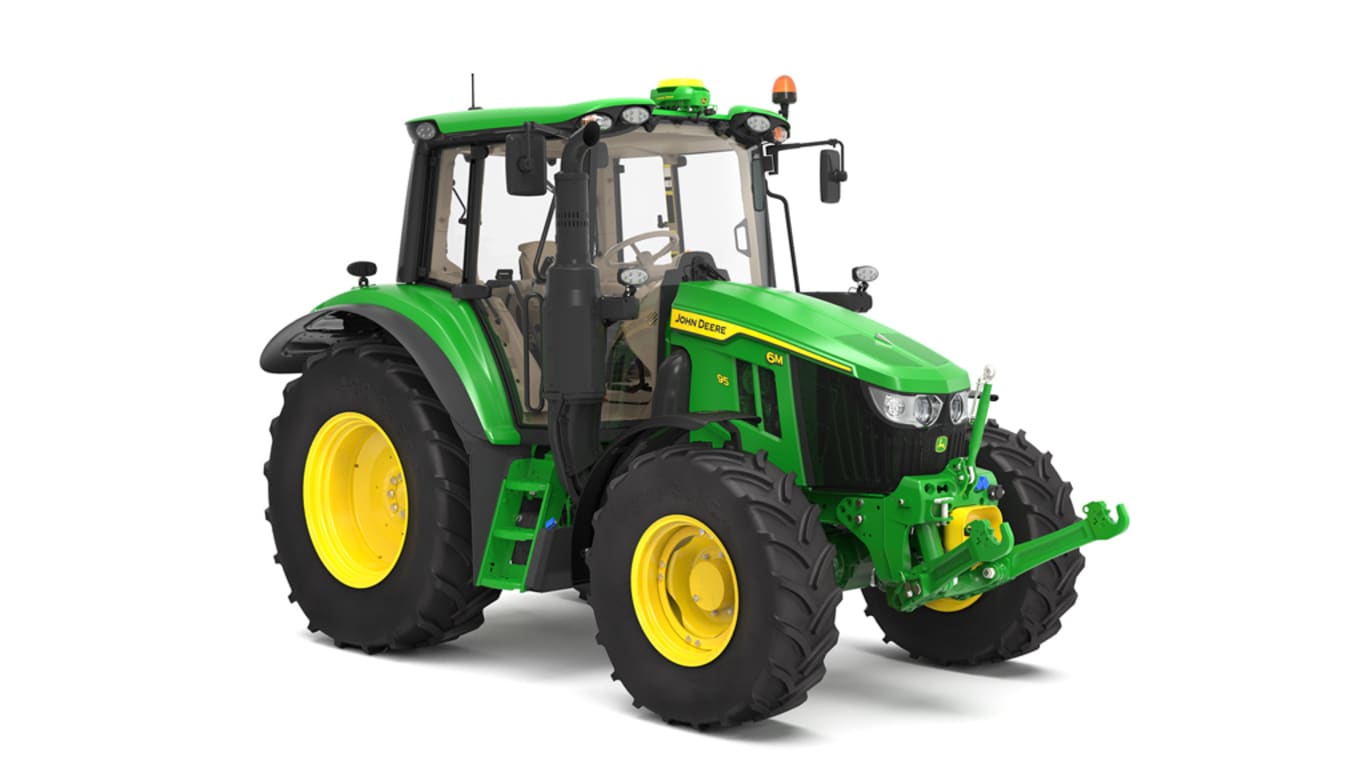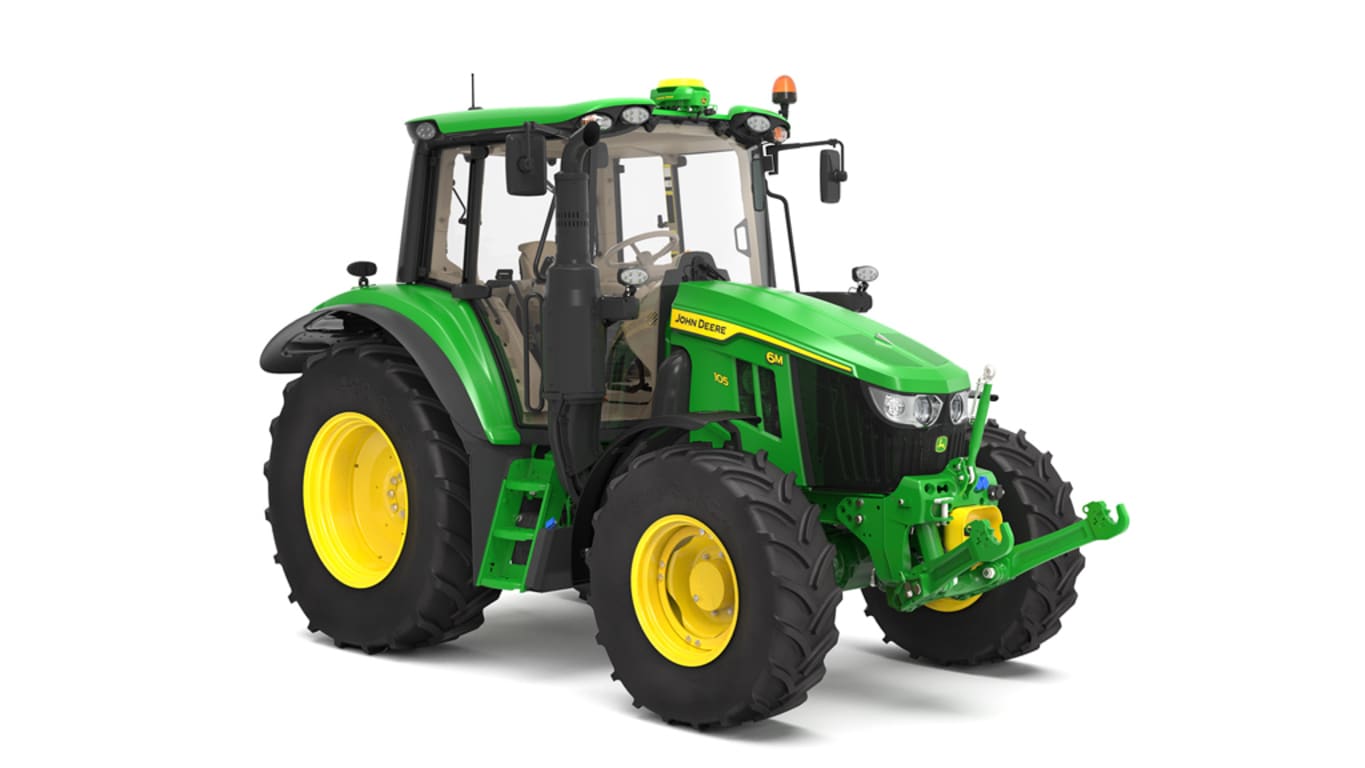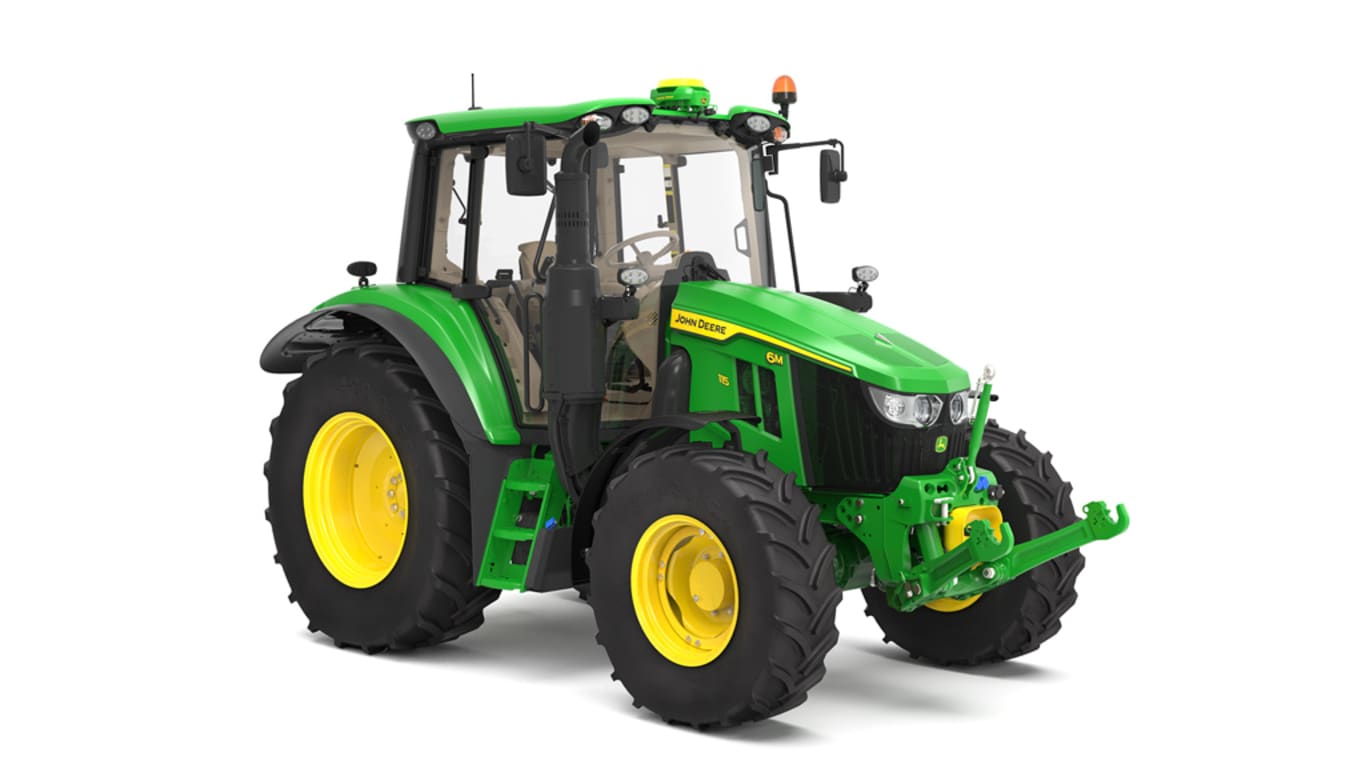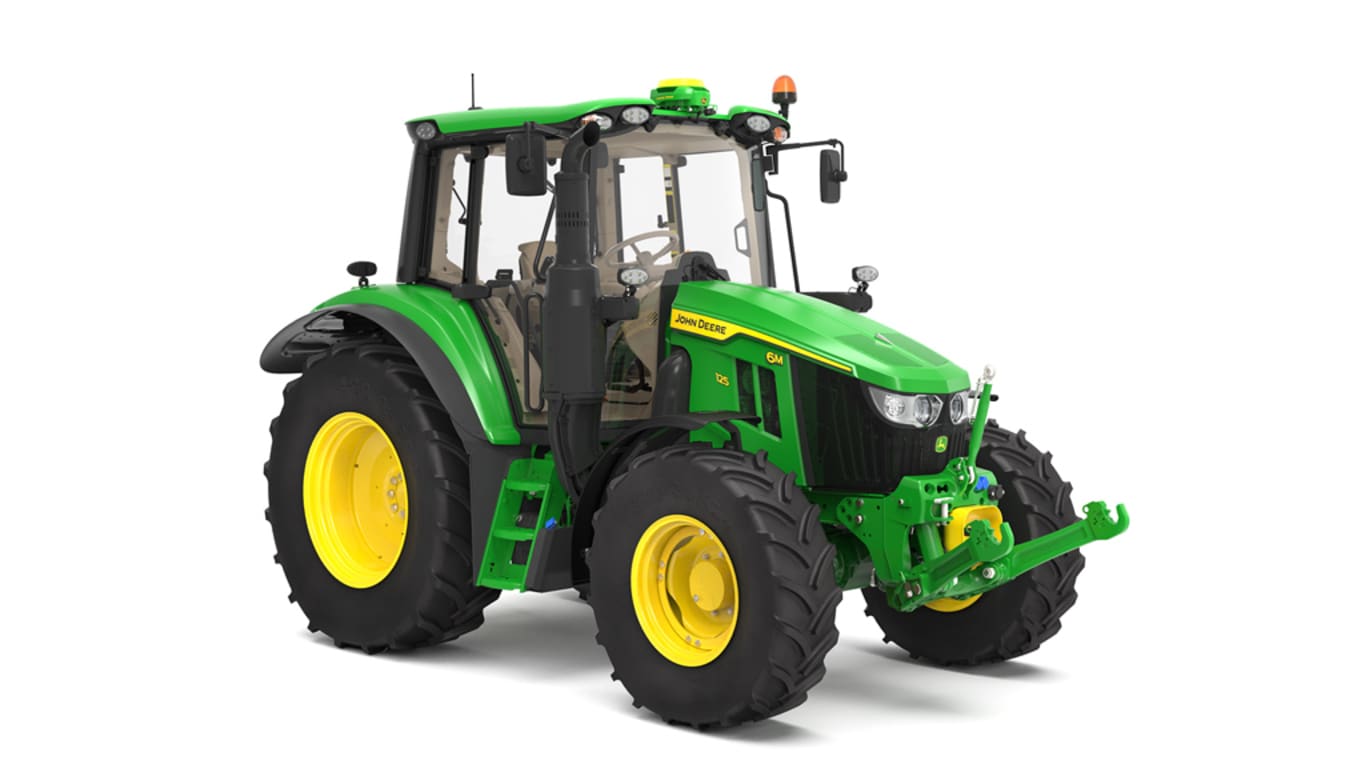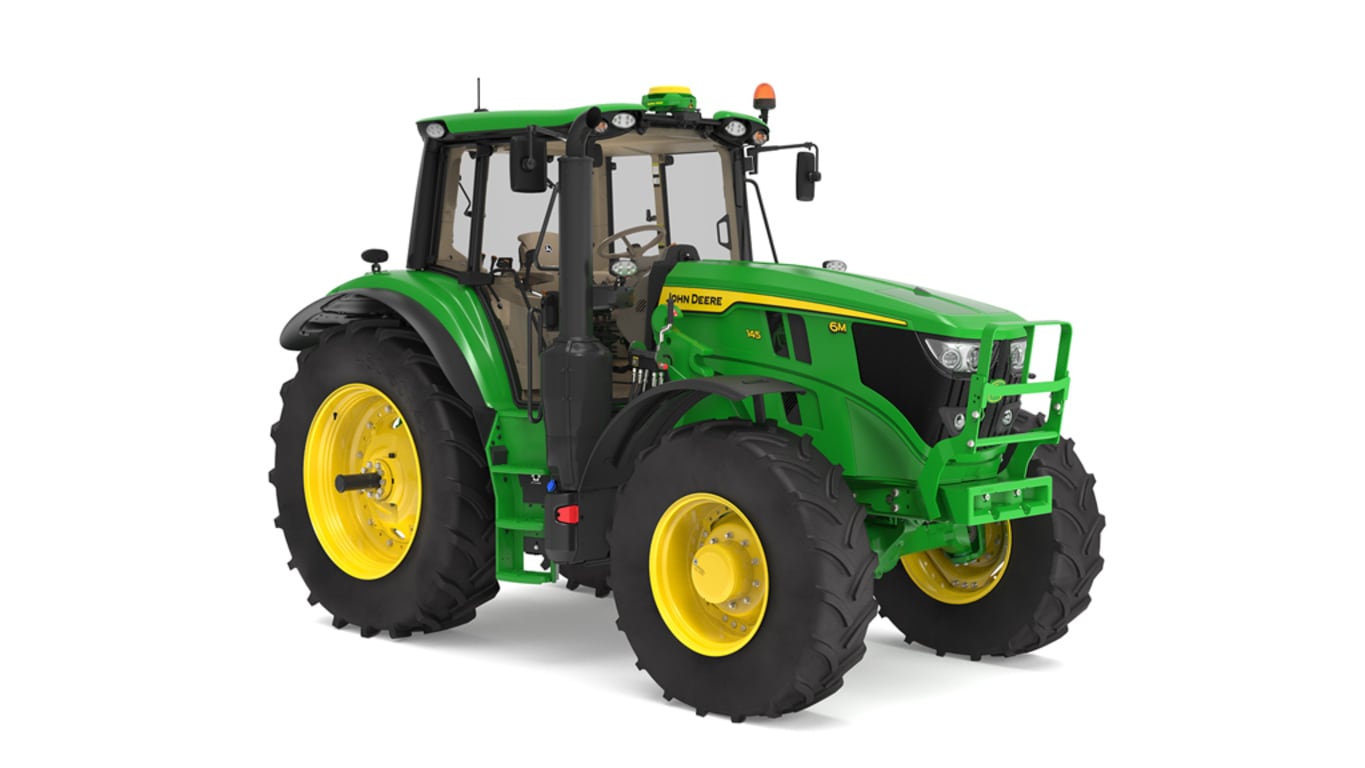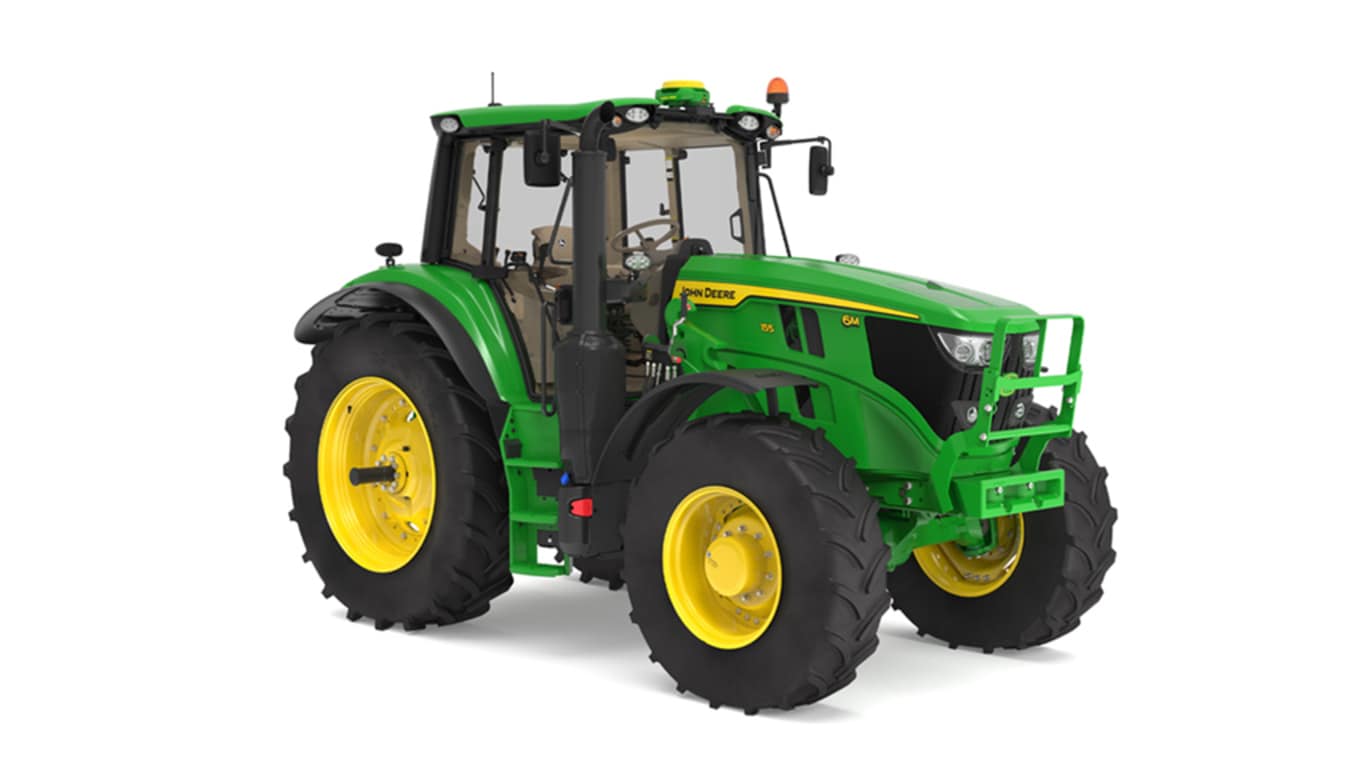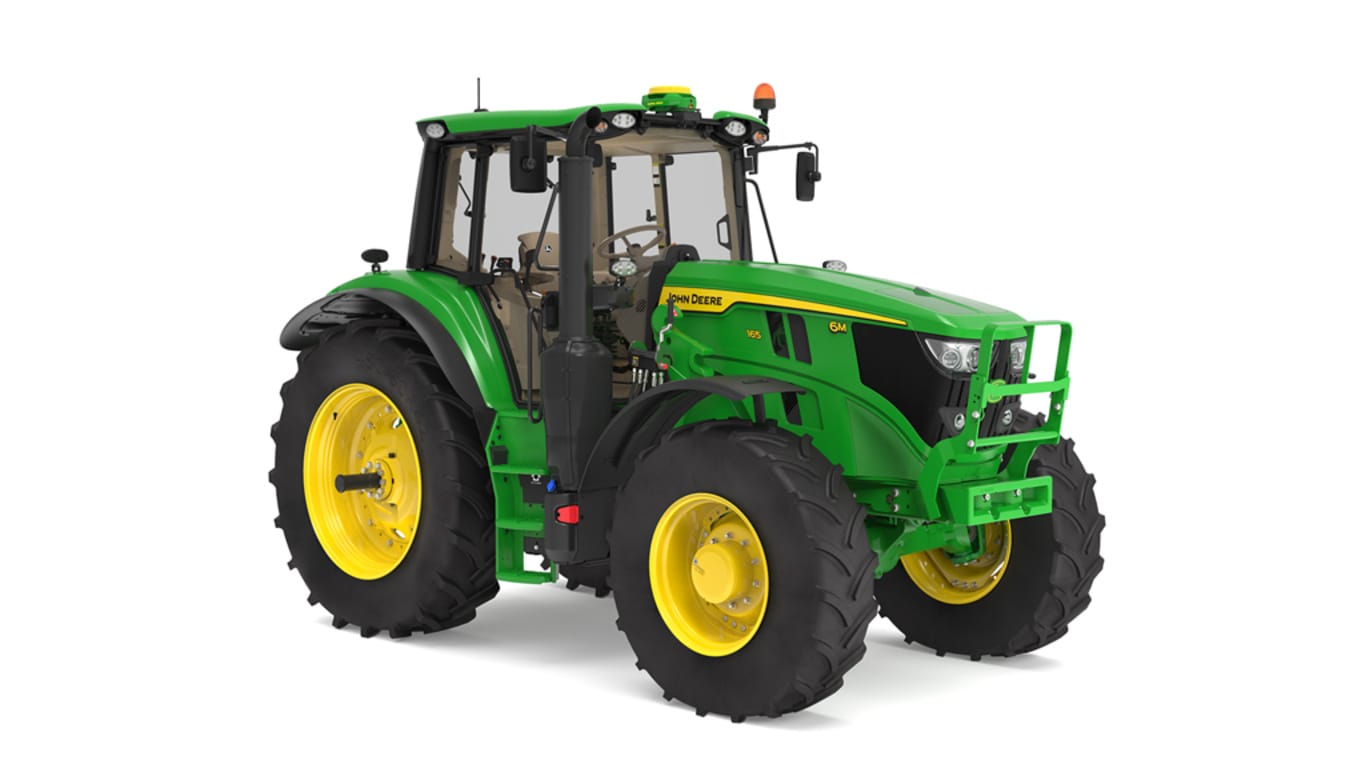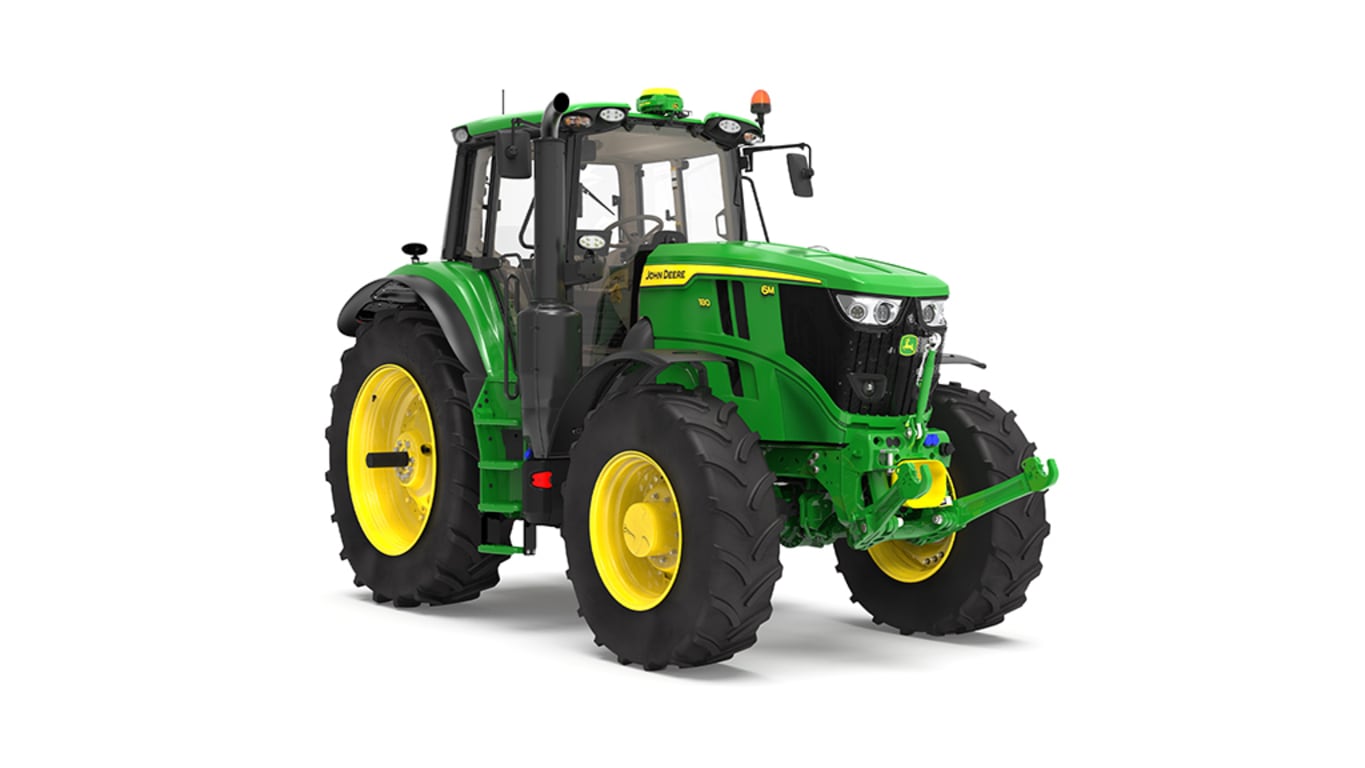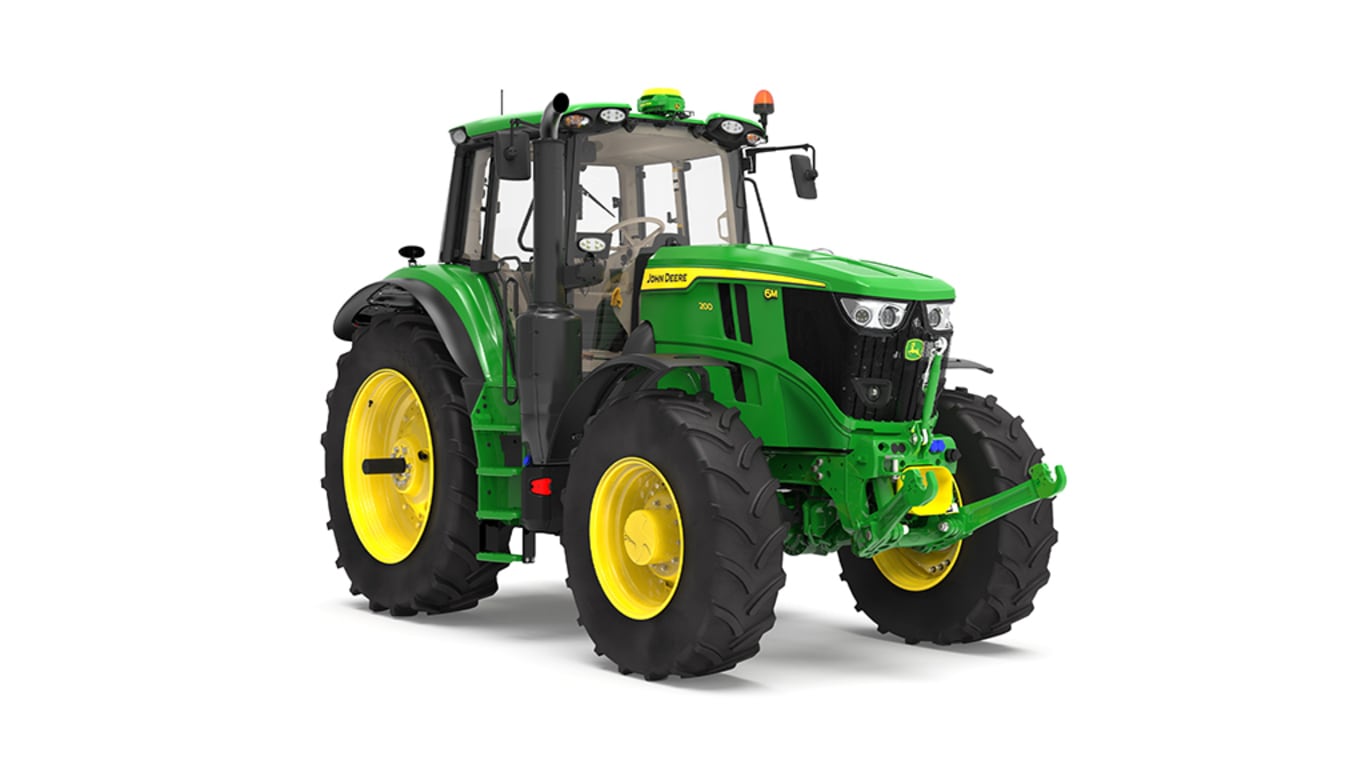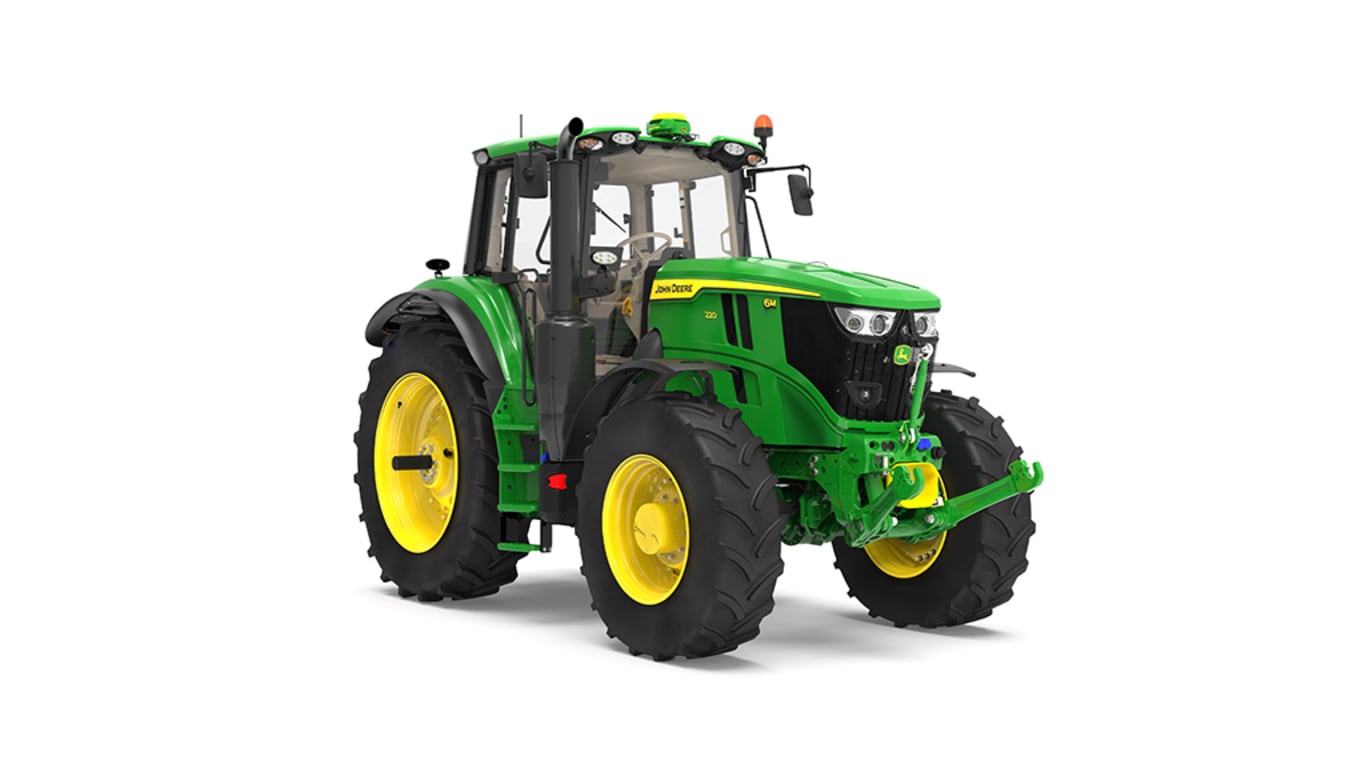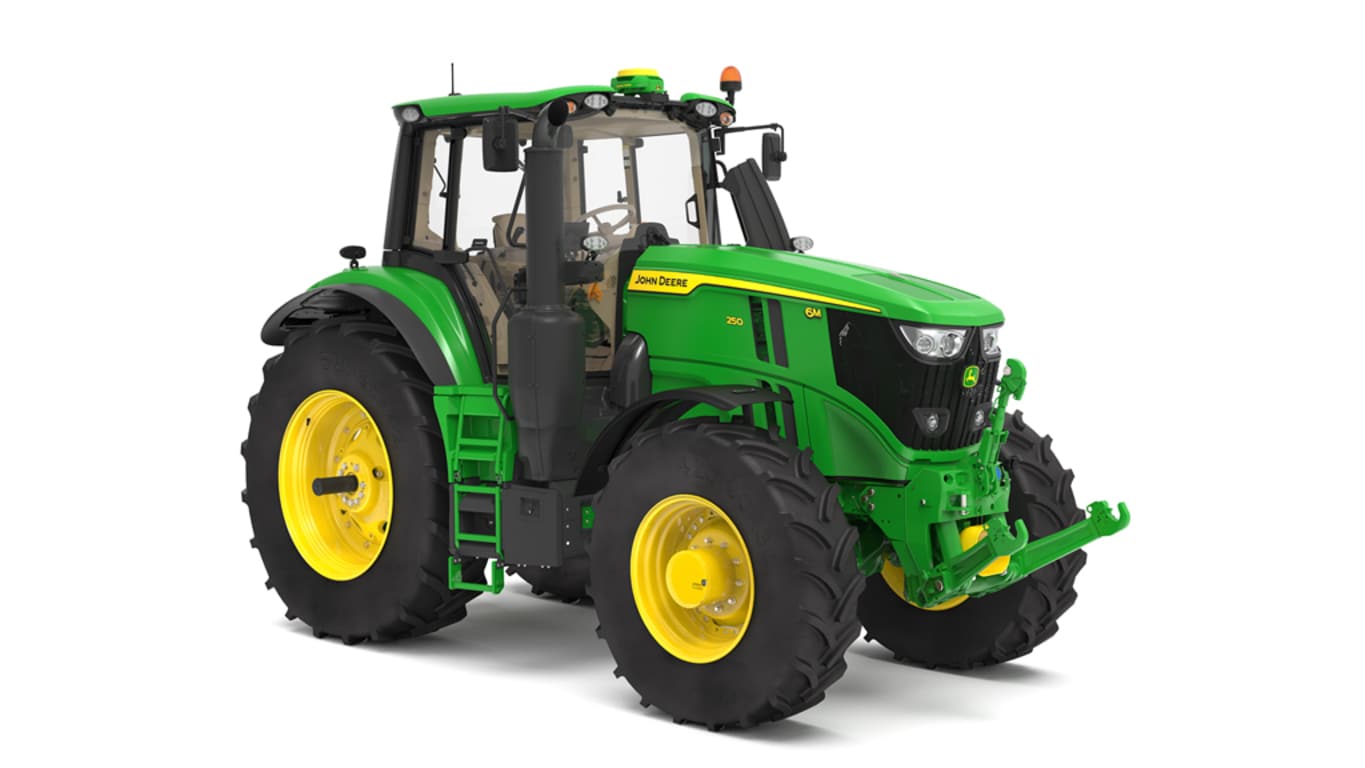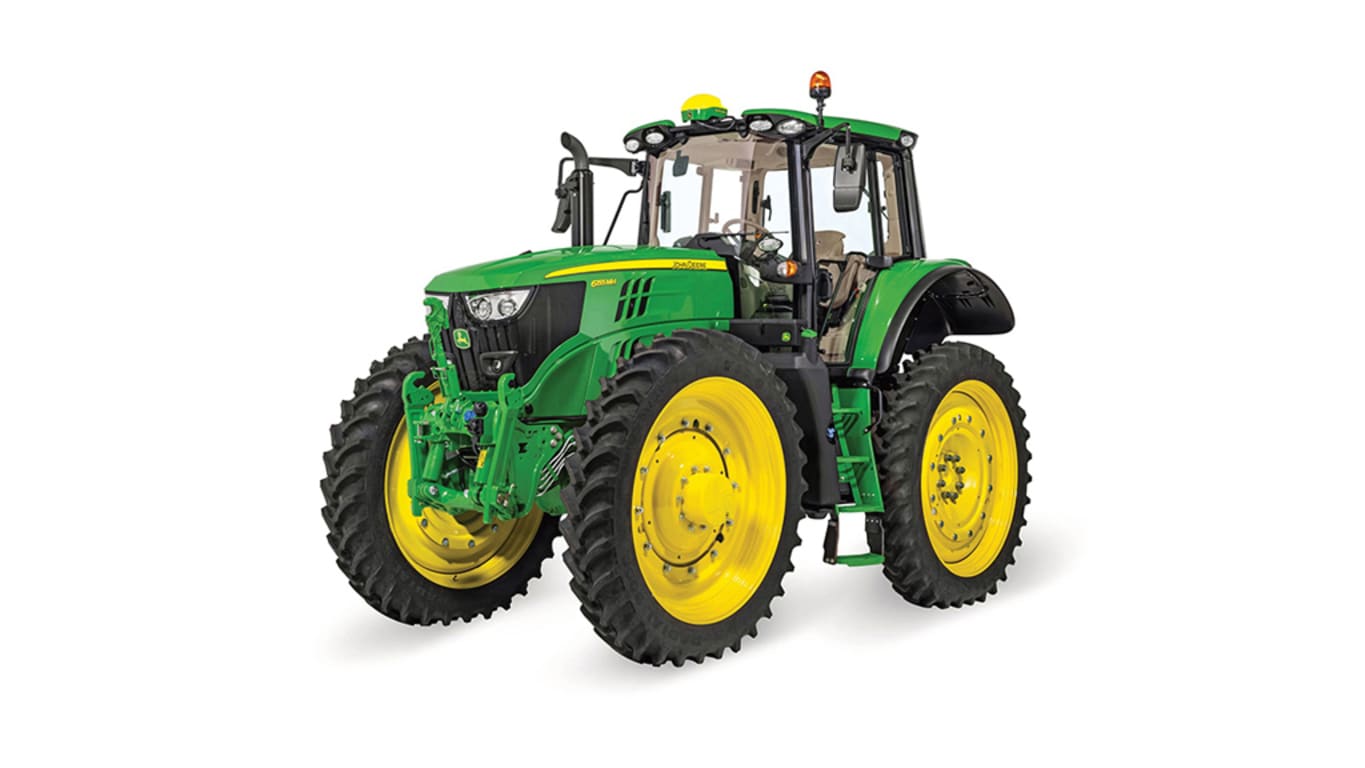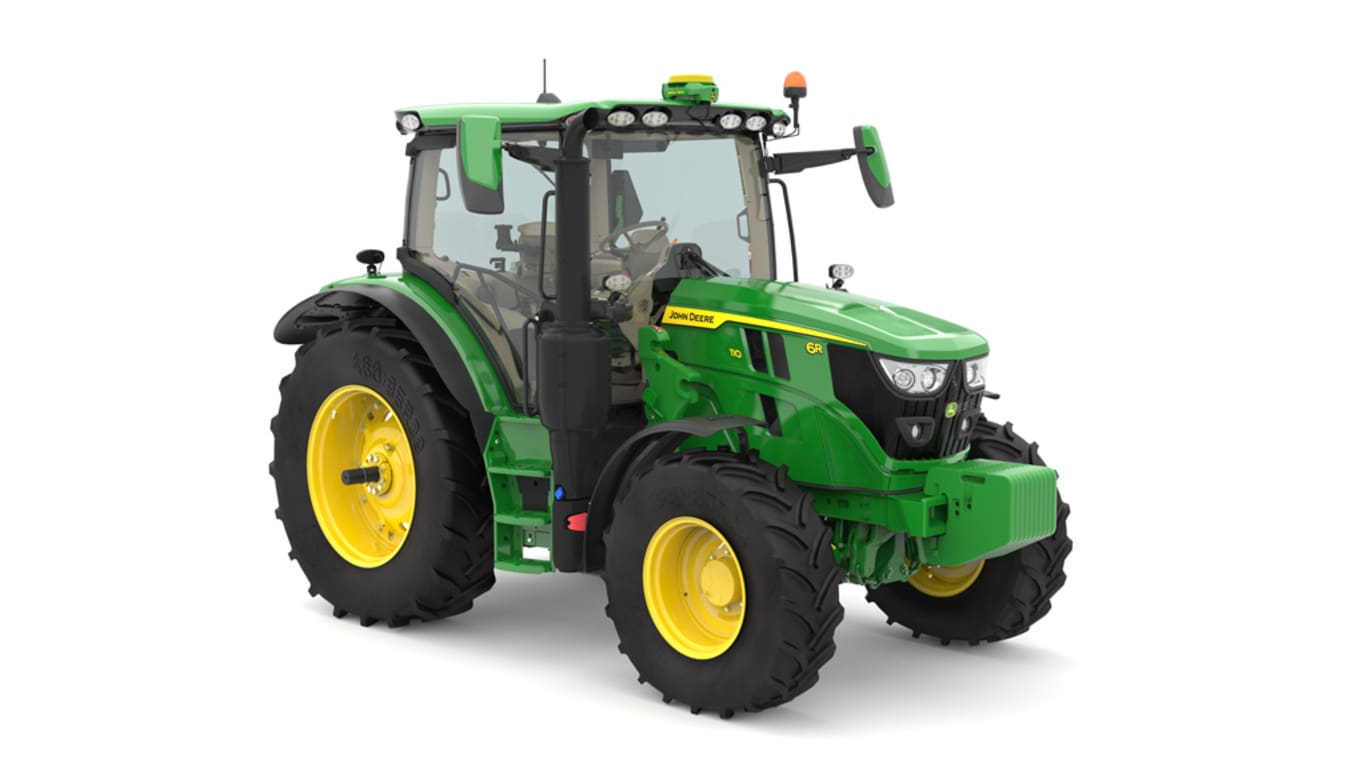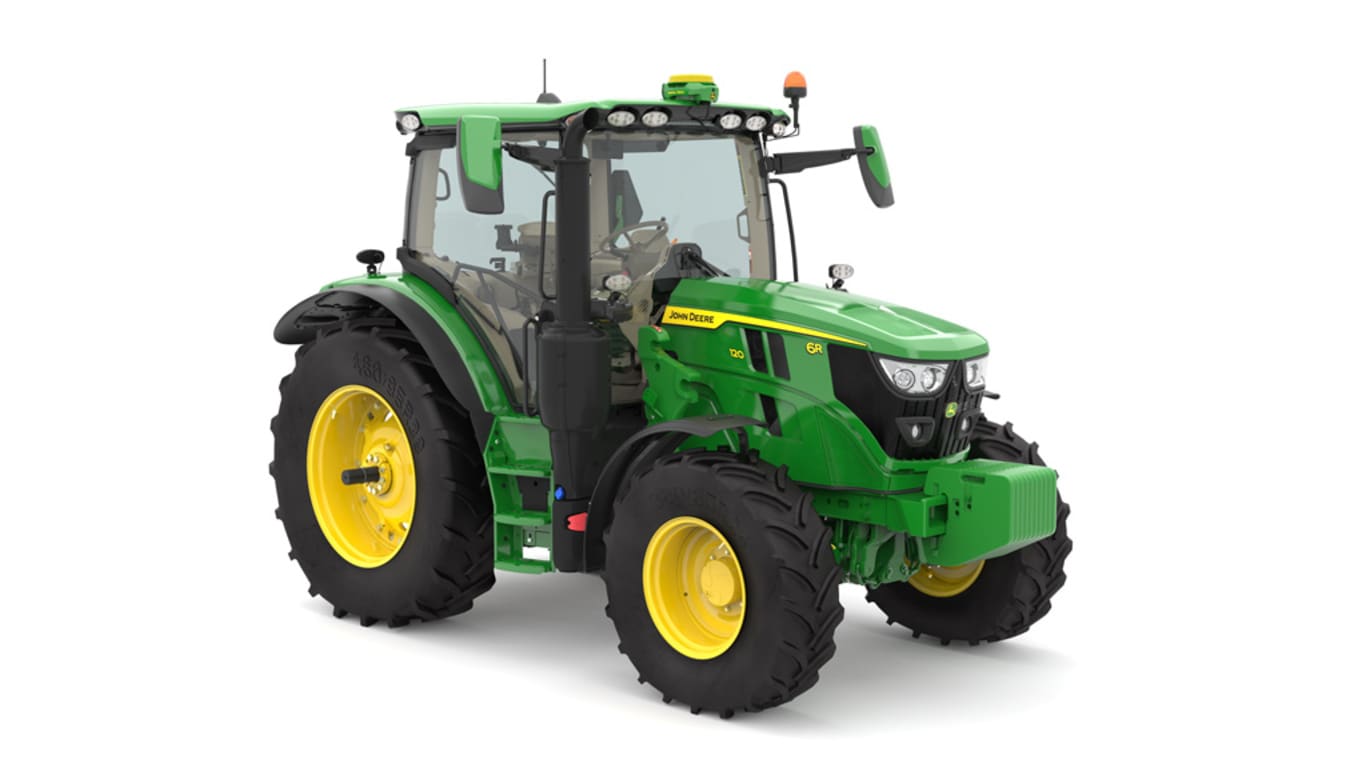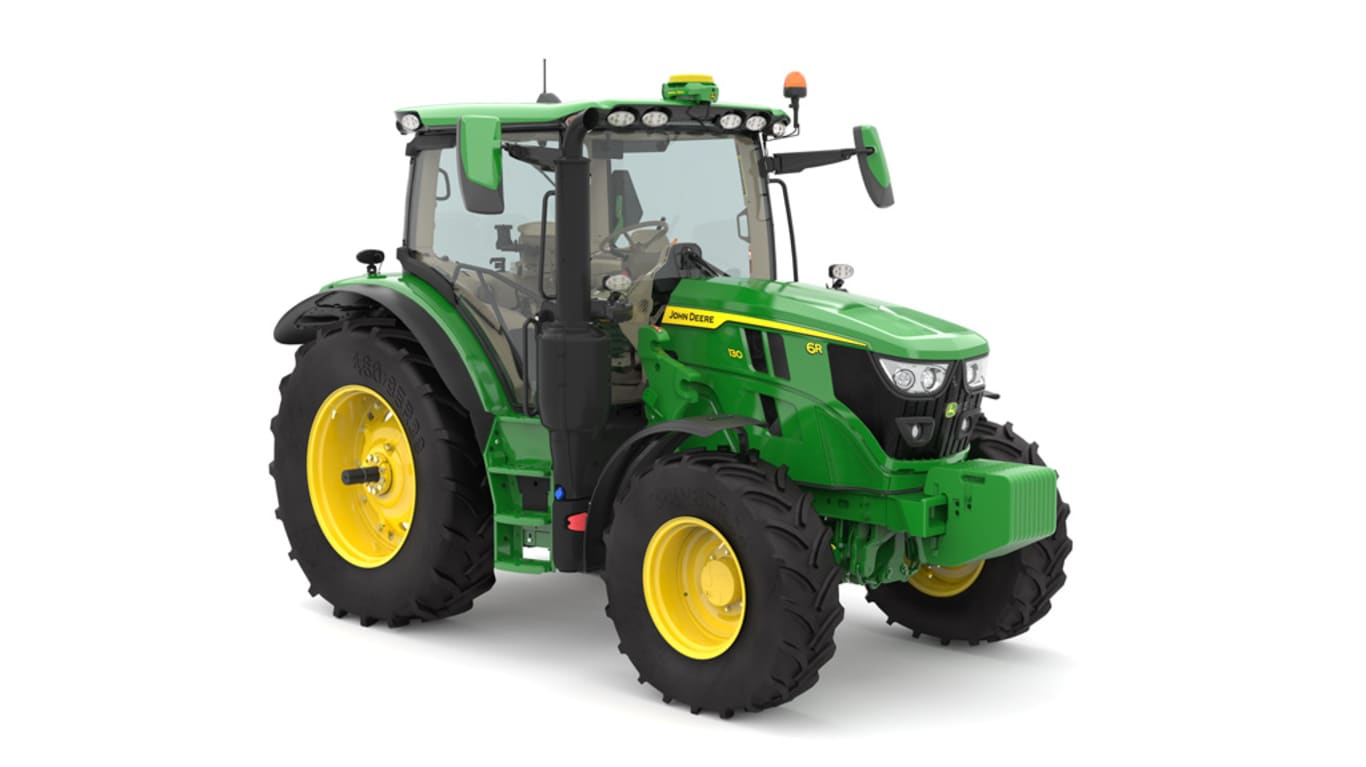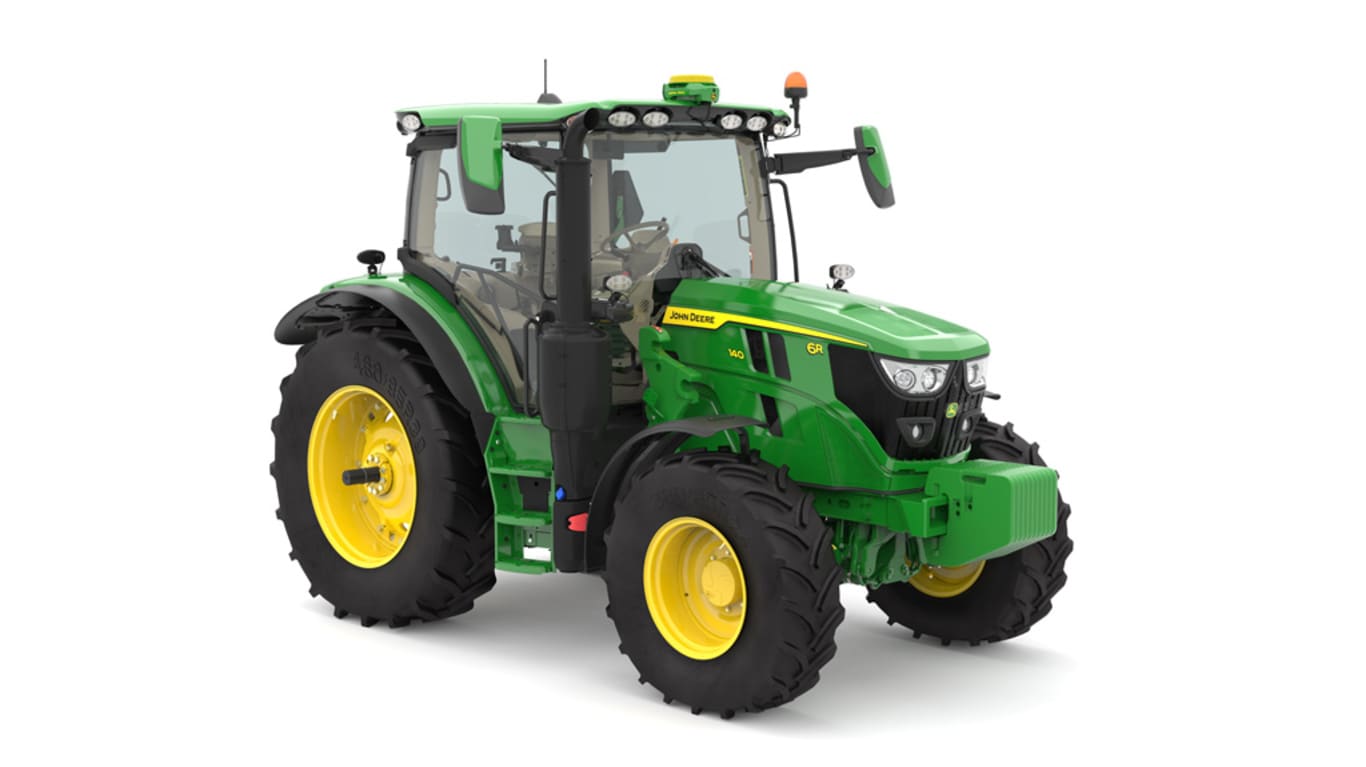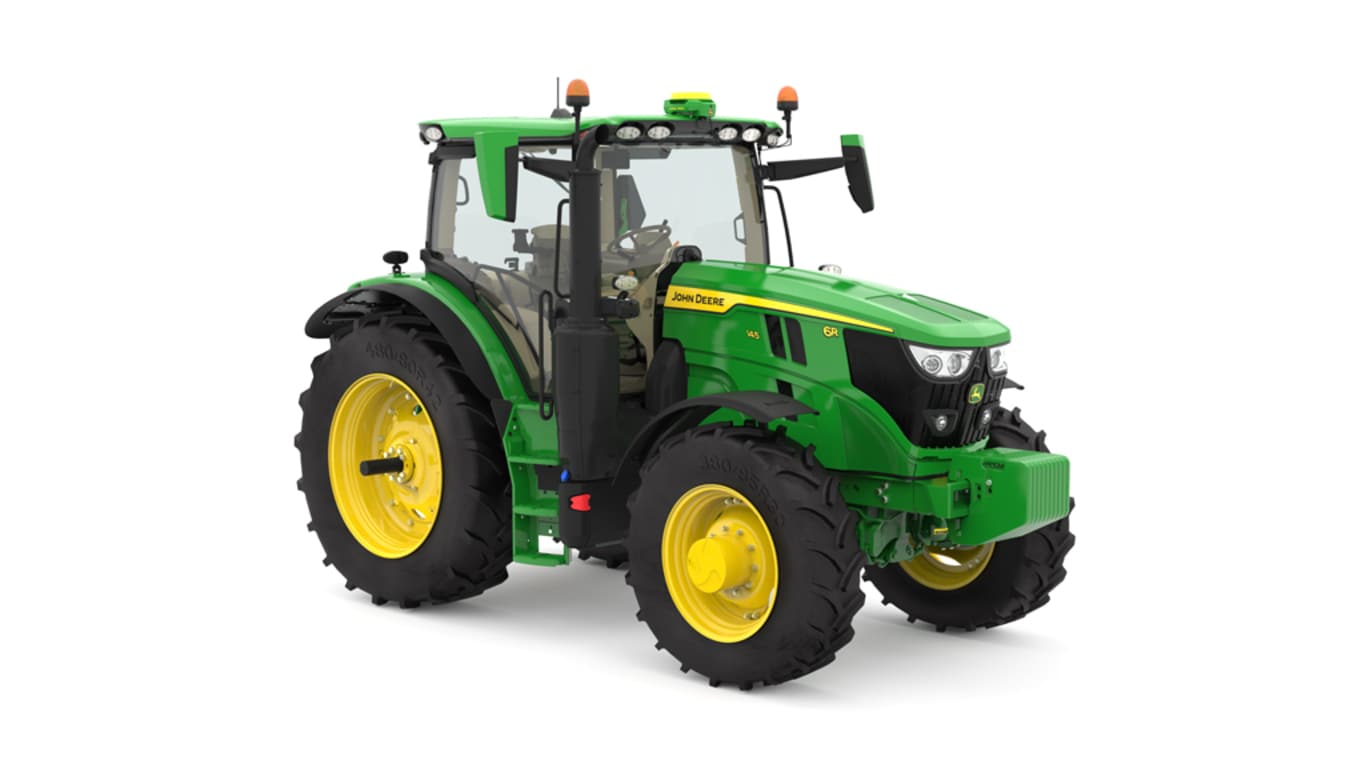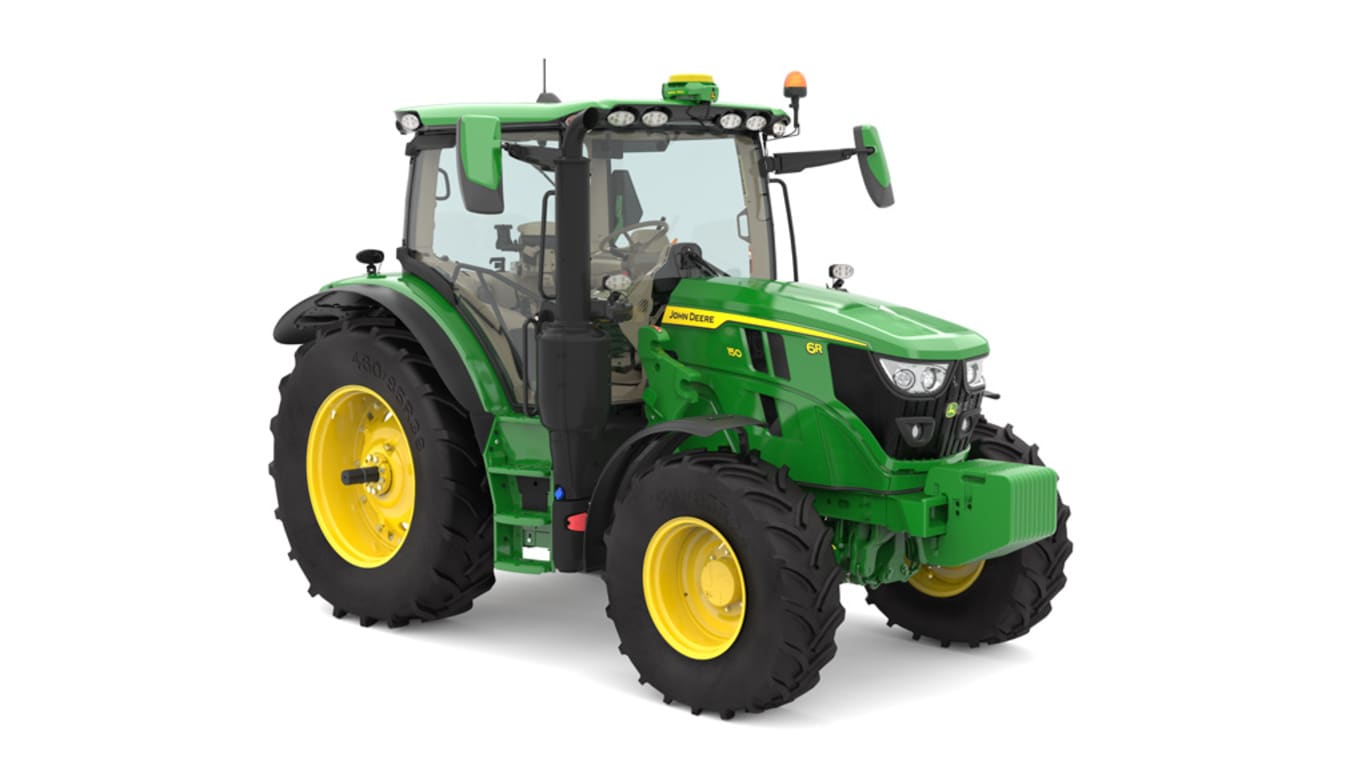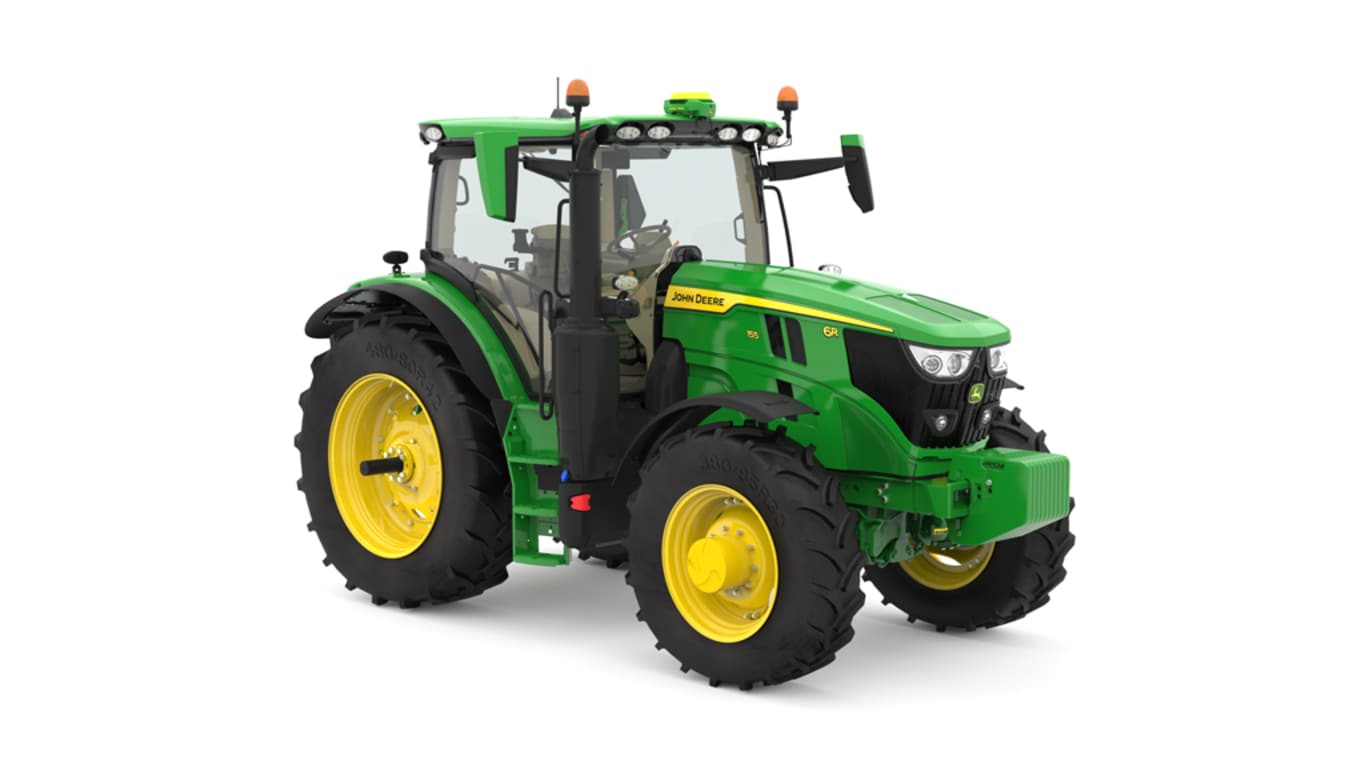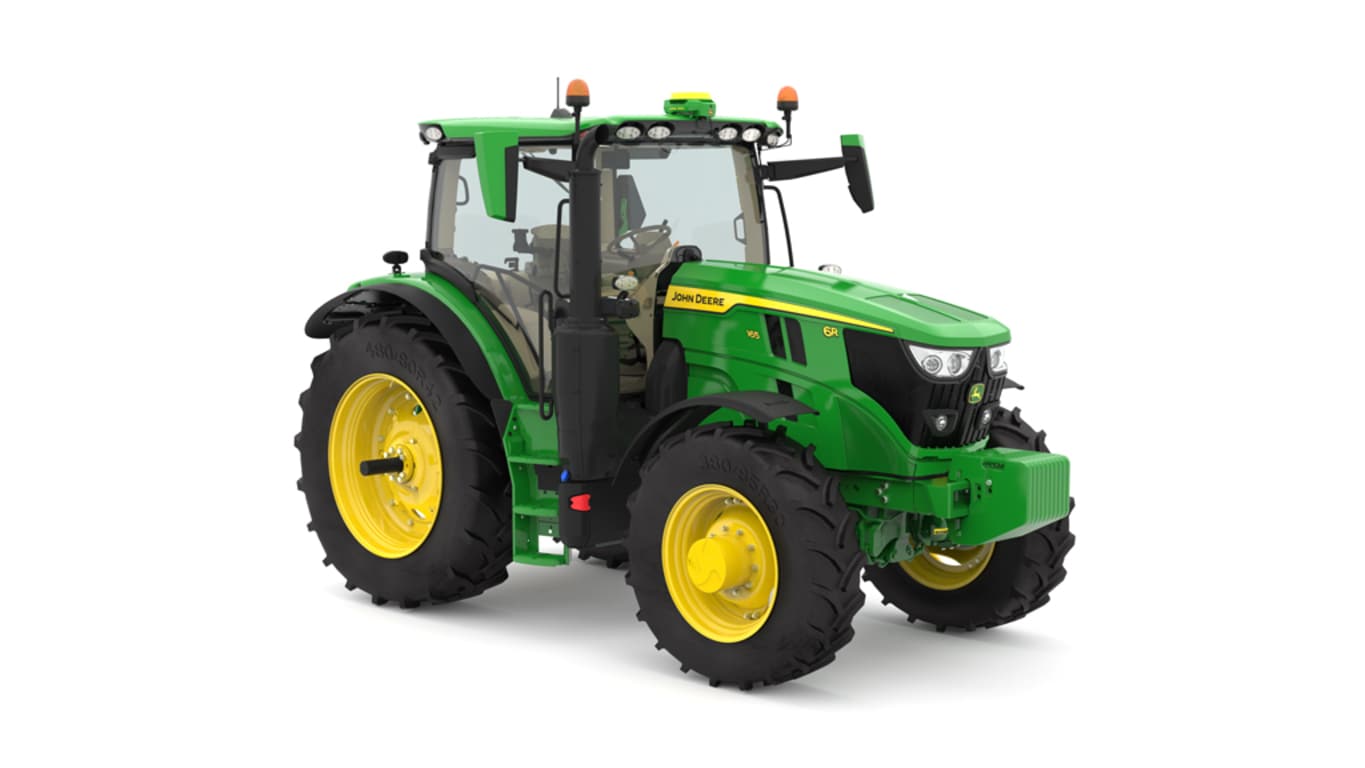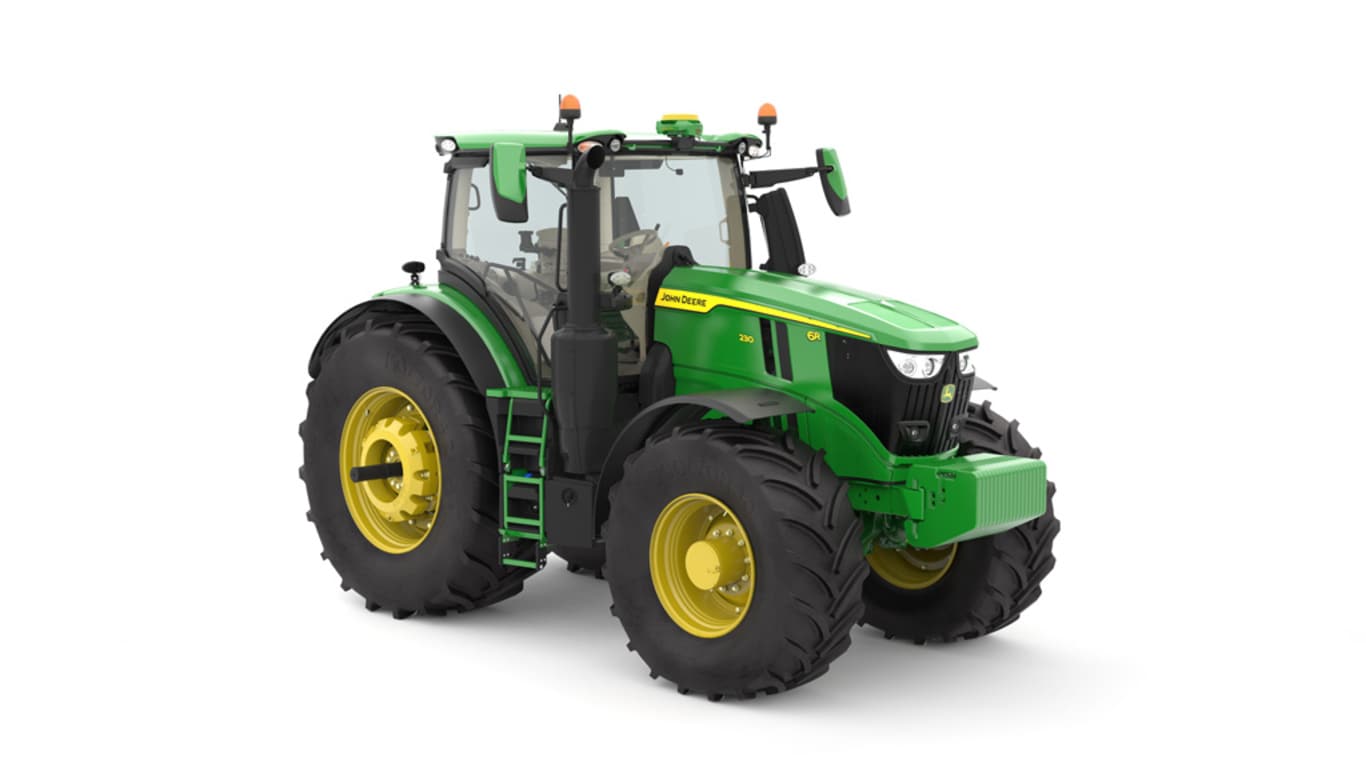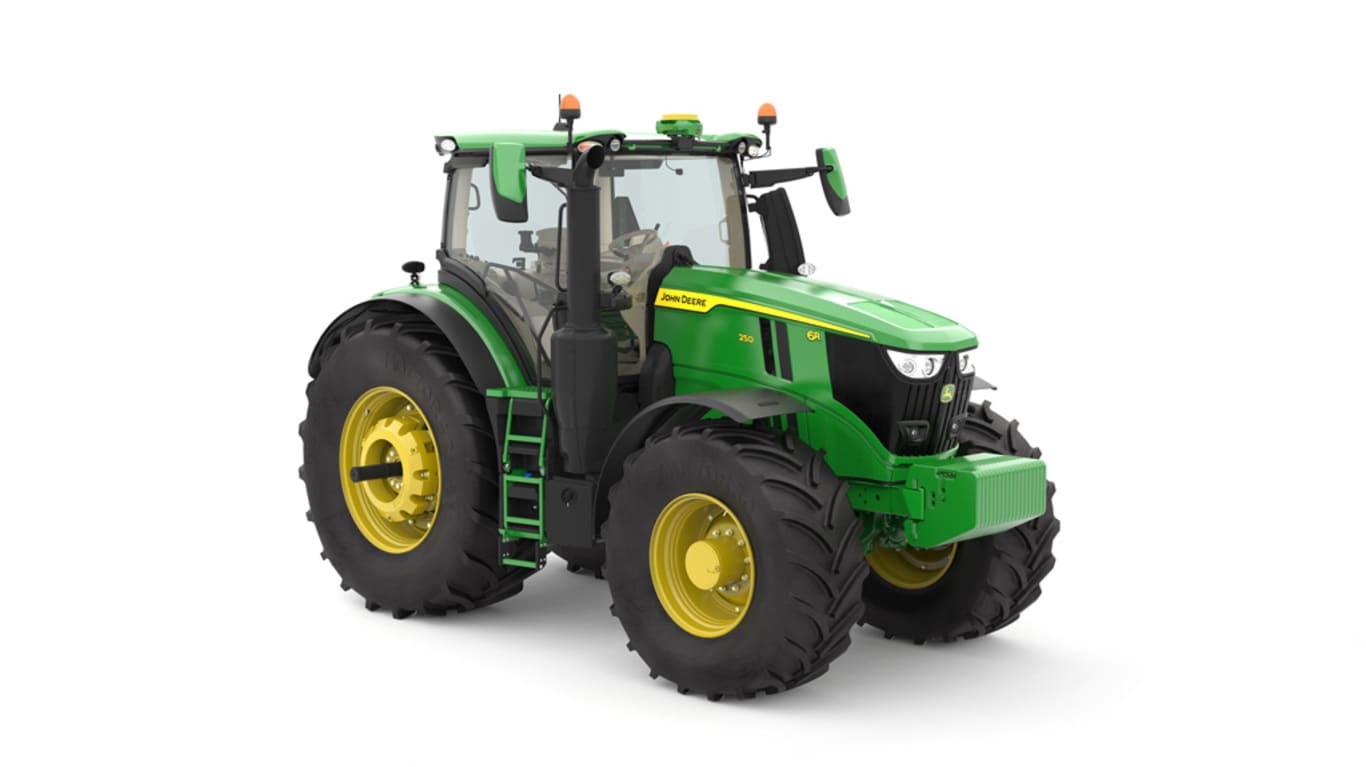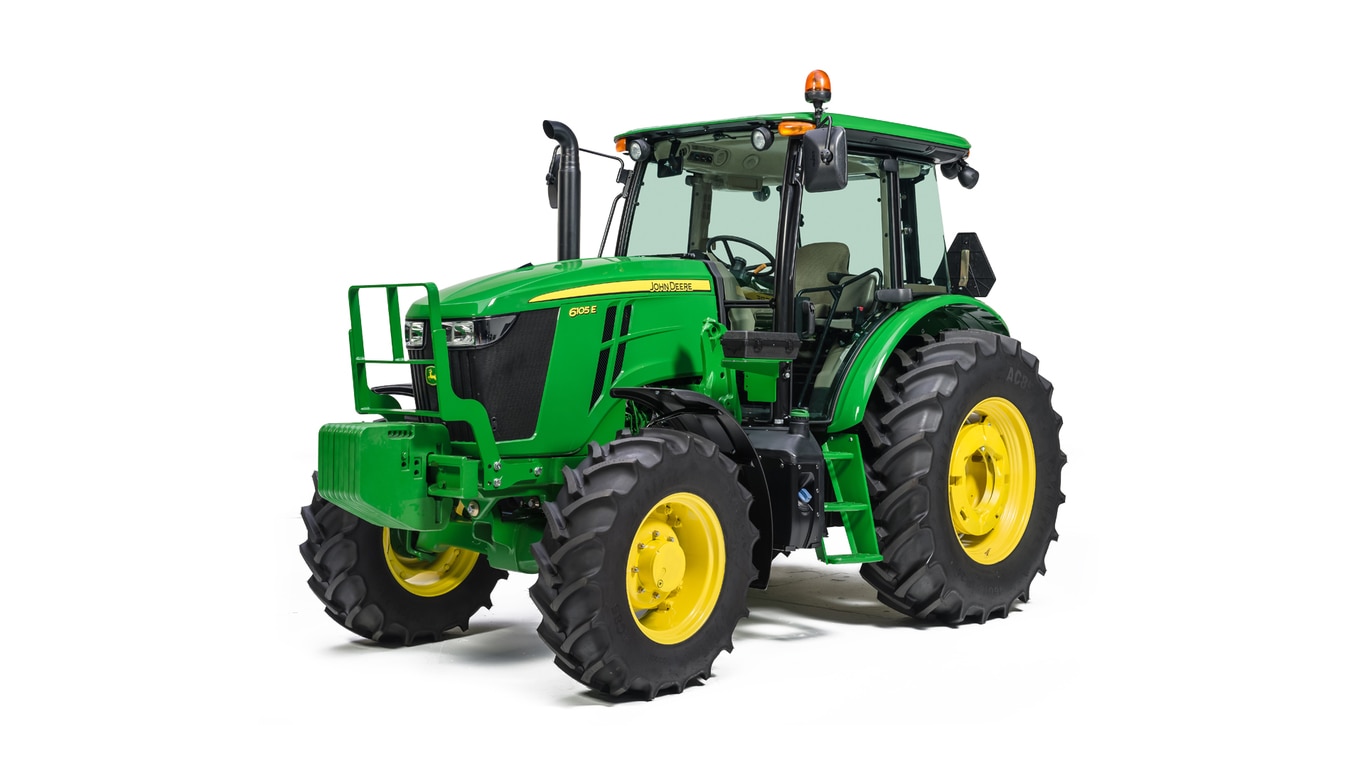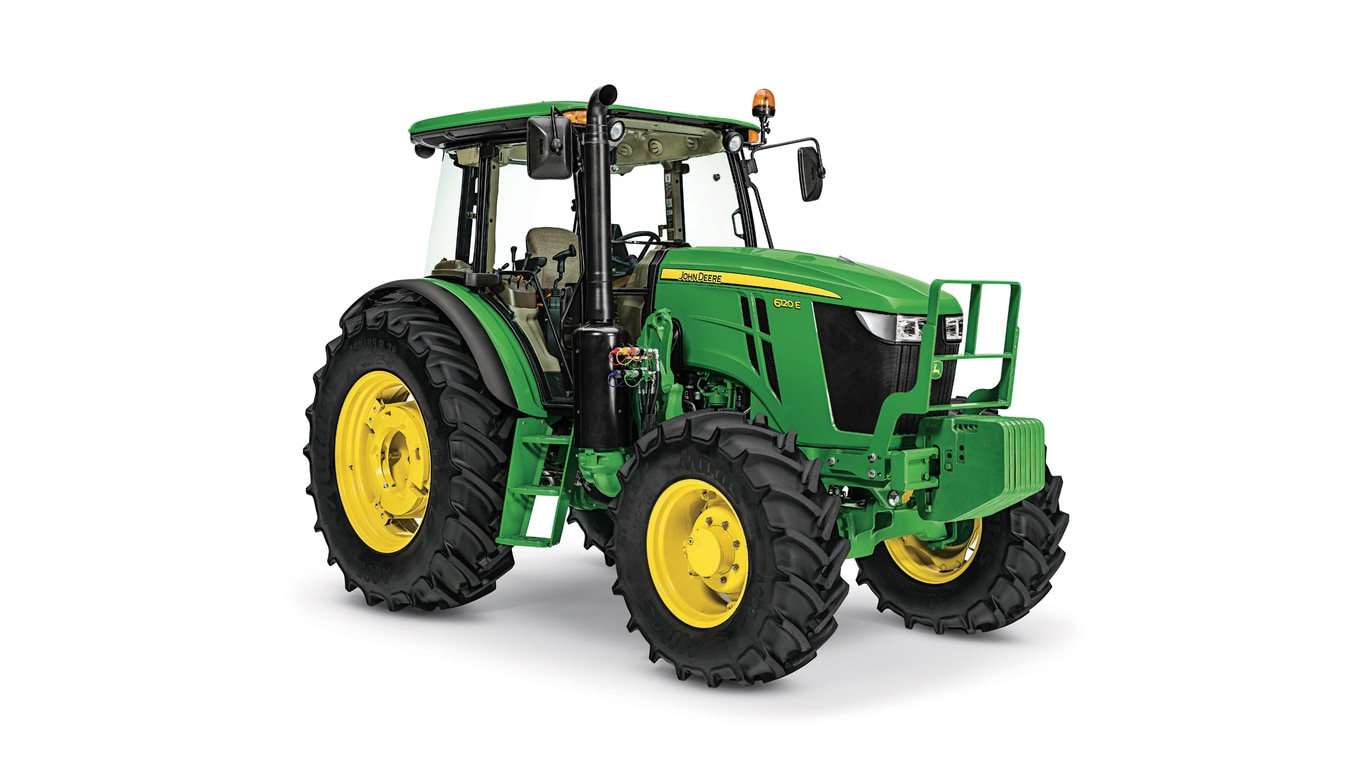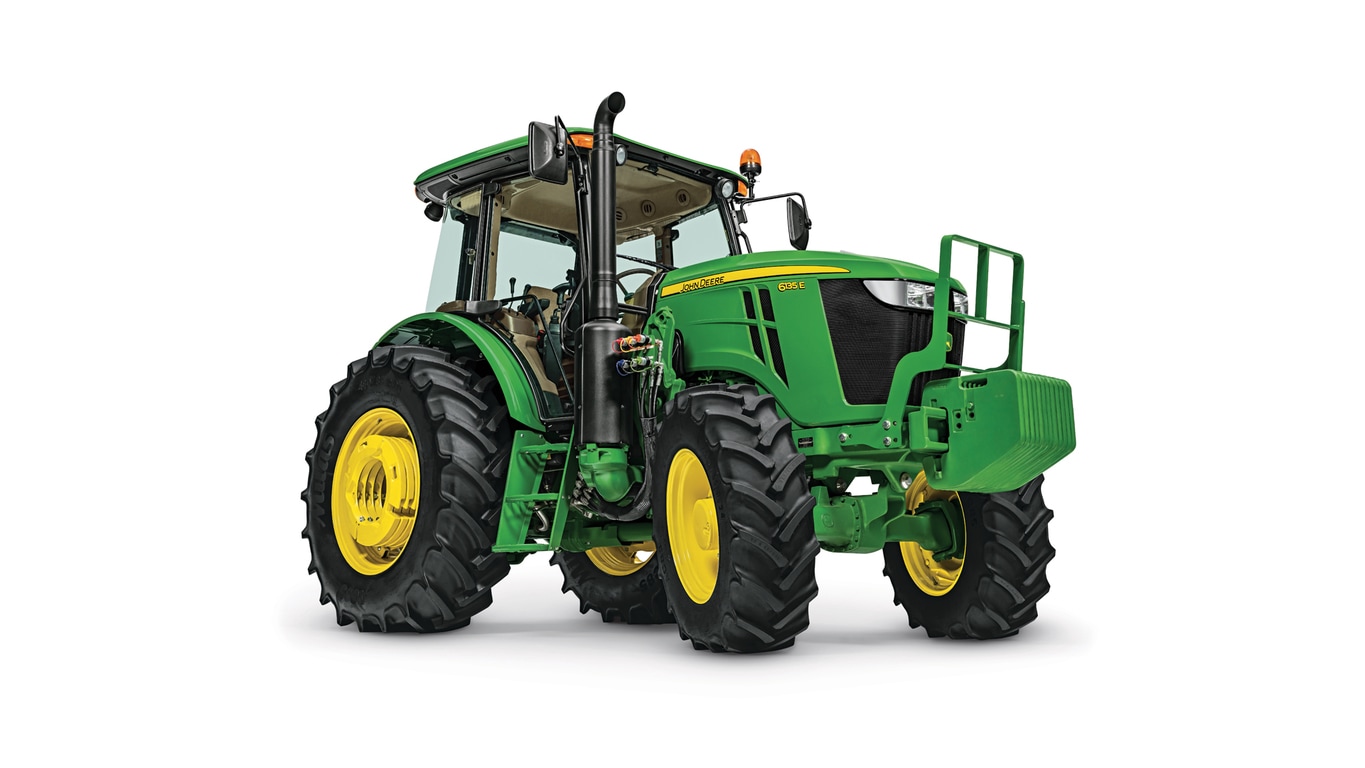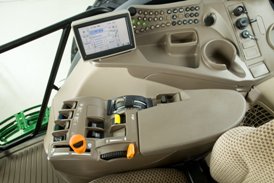 AutoPowr™/IVT™
AutoPowr™/IVT™
John Deere offers the stepless AutoPowr/IVT transmission for those looking for exact speeds to match any application. The fully electronically controlled engine and regulated transmission combine to provide maximum productivity and comfort:
- Speeds from 50 m/h (0.03 mph) to 40/50 km/h (25/31 mph)
- Allows for creeper speeds
- Below 600-m/h (0.37-mph) the travel speed is independent of engine speed
- Different transmission settings, depending on the application
Benefits:
- Easy to operate
- Drive and work comfortably
- Save time and money by setting the exact speed for optimum implement performance
- Less shifting time means better management of the implement
Speed control
 AutoPowr™/IVT™ speed wheel and slot
AutoPowr™/IVT™ speed wheel and slot
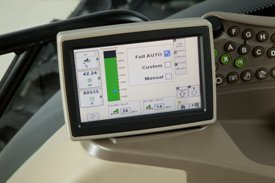 Settings on CommandCenter™
Settings on CommandCenter™
Easy speed control through the speed control lever:
- Quick and precise speed changes
- Fine-tuning via the speed wheel
- Two steps in the slot of the speed control lever to program two set speeds
- Speed feedback on the analog dashboard: The needle shows the actual speed; red lights around the needle show the set speed
- Easy to handle exact speed settings through CommandCenter™ and the speed wheel
CommandARM™
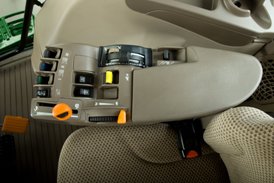 CommandARM™
CommandARM™
If the tractor is equipped with the AutoPowr/IVT transmission, the speed control lever is embedded in the CommandARM. With the CommandARM, the most-utilized tractor functions are integrated in the armrest:
- Speed control lever
- Electrical throttle
- Electrohydraulic selective control valves (SCVs)
- iTEC™ switch
- AutoTrac™ switch
- Power take-off (PTO)
- Hitch control
Left-hand reverser
 Left-hand reverser
Left-hand reverser
With the AutoPowr/IVT left-hand reverser, the operator can control four functions.
- Park lock (P) – Tractor cannot move and the trailer brakes are engaged, if equipped
- Forward/reverse (tractor icon)
- Neutral (N) – Tractor is in a non-parked position and capable of movement
- PowerZero™ – 10 seconds after the tractor stops rolling, the park lock automatically engages. If the lever is held in the center position between forward and reverse, the tractor will not be braked. That allows the tractor to move off quicker than the park position.
Electronic hand and foot throttle
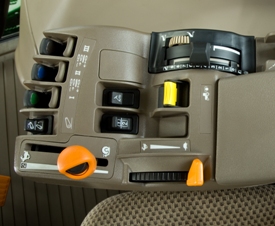 Hand throttle
Hand throttle
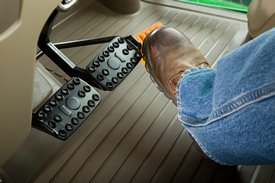 Foot throttle
Foot throttle
The hand and foot throttles operate electronically:
- Define setting of the engine speed
- Quick attainment of desired speed
- Precise speed adjustments
Custom mode settings
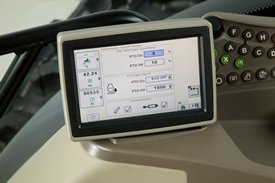 AutoPowr™/IVT™ custom mode settings
AutoPowr™/IVT™ custom mode settings
Operators can customize the auto shift engine speed droop as a percentage, between 4 percent - 30 percent of the full engine speed. Also, operators can adjust the ECO engine speed to choose the lower rpm used by the fuel economy feature, between 1800 engine speed – 1200 engine speed.
In addition, the load anticipation feature can be enabled for:
- Hitch engagement
- Hydraulic engagement
- Hitch and hydraulic engagement
Load anticipation feature
A load anticipation feature is base equipment on all 6R Series Tractors equipped with an AutoPowr/IVT transmission. The load anticipation feature allows the AutoPowr/IVT to predict how much load the engine expects from the activation of the hitch or a particular SCV function.
For it to be activated, the SCV or hitch lever is placed in the detented position when the hydraulic load is decreasing. The system learns this load from an SCV or hitch lever movement in the detent position only, resulting in a decreased engine load (raising the implement). The AutoPowr/IVT remembers the load change, and when it detects the same lever starting a movement in the opposite direction (for example, lowering the implement), it automatically responds with a short engine rpm boost to provide more power to handle the oncoming load increase.
This provides the tractor an engine speed boost before the implement engages the ground. For example, if an operator lifts the implement out of the field, fuel economy mode kicks in to start reducing engine rpm as a headland turn is made. When the load anticipation feature detects the implement being lowered as the result of an SCV or hitch lever movement, an engine speed boost is automatically commanded prior to the implement engaging the ground.
- John Deere-only feature
- Tractor recognizes when additional power is needed, so the operator does not have to
- Saves fuel, because the engine reduces rpms when no additional power is needed
AutoPowr™/IVT™ selector control via CommandCenter™
The AutoPowr/IVT application settings employ three modes to take full advantage of the engine-transmission communication: Full auto mode, custom mode, and manual mode.
Full auto mode
 AutoPowr™/IVT™ full auto mode
AutoPowr™/IVT™ full auto mode
Full auto mode enables the tractor to make adjustments to the transmission operating mode automatically, based on the engine and transmission speeds and the load on the tractor. This should be the AutoPowr/IVT setting for 95 percent of all applications.
Full auto mode switches between load control and fuel economy mode seamlessly, with no involvement from the operator, as conditions and applications change. Fuel economy mode automatically switches off when the PTO is engaged to provide full PTO power. Operators can set the maximum forward and reverse speeds for the tractor in their particular application.
Custom mode
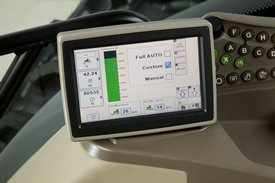 AutoPowr™/IVT™ custom mode
AutoPowr™/IVT™ custom mode
Custom mode allows the operator to customize the AutoPowr/IVT settings when full auto mode is not desirable.
Manual mode settings
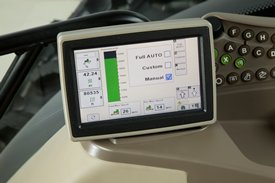 AutoPowr™/IVT™ manual mode settings
AutoPowr™/IVT™ manual mode settings
Manual mode turns the automatic adjustments off and disables the fuel economy mode of the transmission. The transmission does not automatically adjust engine rpm to save fuel in this mode. This can prove to be useful in applications like loader work, where the variability of engine speed based on load is not needed.
Engine speeds in “eco mode” without load
Models |
At 40 k (25 mph) with rated rpm |
At 40 k (25 mph) with eco mode * |
rpm reduction * |
| 6105 R – 6125R |
2100 |
1470 |
630 |
6170 R – 6210 R |
2100 |
1460 |
640 |
*Theoretical engine speed, not depending on rear tire size.
Forward/Reverse relationship
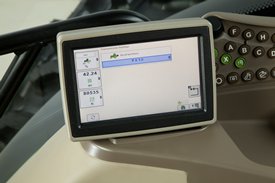 CommandCenter™ forward/reverse ration
CommandCenter™ forward/reverse ration
Similar to the AutoQuad™ PLUS transmission, the AutoPowr/IVT can also adjust the forward/reverse speed ratio. The reverse speeds can be set to a maximum of 30 percent higher and 70 percent lower than forward speeds, but only in range 1. In range 2 the forward-to-reverse speed ratio is 1:1, up to 22 km/h (14 mph). Above that, the forward-to-reverse speeds will only go up to 30km/h (19 mph).
50 km/h (31 mph)
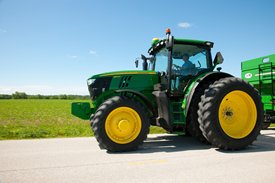 6R in transport
6R in transport
The following features are part of the 50k package:
- TLS Plus with brakes for adapted braking capacity.
- B speed rated wheels and tires to minimize vibration and increase ride comfort.
- Hydraulic trailer brakes.
Models |
At 50 k (31 mph) with rated rpm |
At 50 k (31 mph) with eco mode * |
rpm reduction * |
6105 R – 6125 R |
2100 |
1840 |
260 |
6170R – 6210R |
2100 |
1830 |
270 |
Brake with integrated AutoClutch function
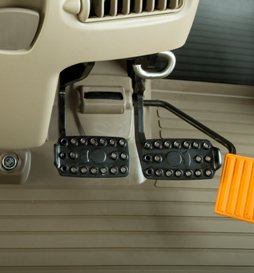 Brake with integrated AutoClutch function
Brake with integrated AutoClutch function
With the AutoPowr/IVT, no clutching is required to stop the tractor. After the brakes are released, the tractor automatically accelerates back to its previous speed due to the high torque of the hydraulic/mechanic power split in the transmission. This feature makes the AutoPowr/IVT an ideal transmission for operations that require a lot of speeds (like baling or loader work).
Torque
The AutoPowr/IVT is a combination of mechanical and hydraulic components that are capable of providing low speed with extremely high levels of torque:
- Allows the tractor to smoothly pull away, even under high loads
- Enhances front loader operation by delivering high torque, driving the tractor into the pile without slippage
- Retains constant working speeds with PTO implements, which have a tendency to push the tractor
Creeper mode
Creeper mode is a standard feature on AutoPowr/IVT. Down to 50 m/h (164 fph), the creeper mode is activated when the selected speed is below 2,1 km/h (1.3 mph) in set position 1.
When the tractor moves below 600 m/h (0.37 mph), the engine speed is independent of travel speed. This allows the operator to choose the engine speed that best fits the task (rated speed for hydraulic or PTO usage, or low idle for fuel-saving operation). No additional power is needed.
